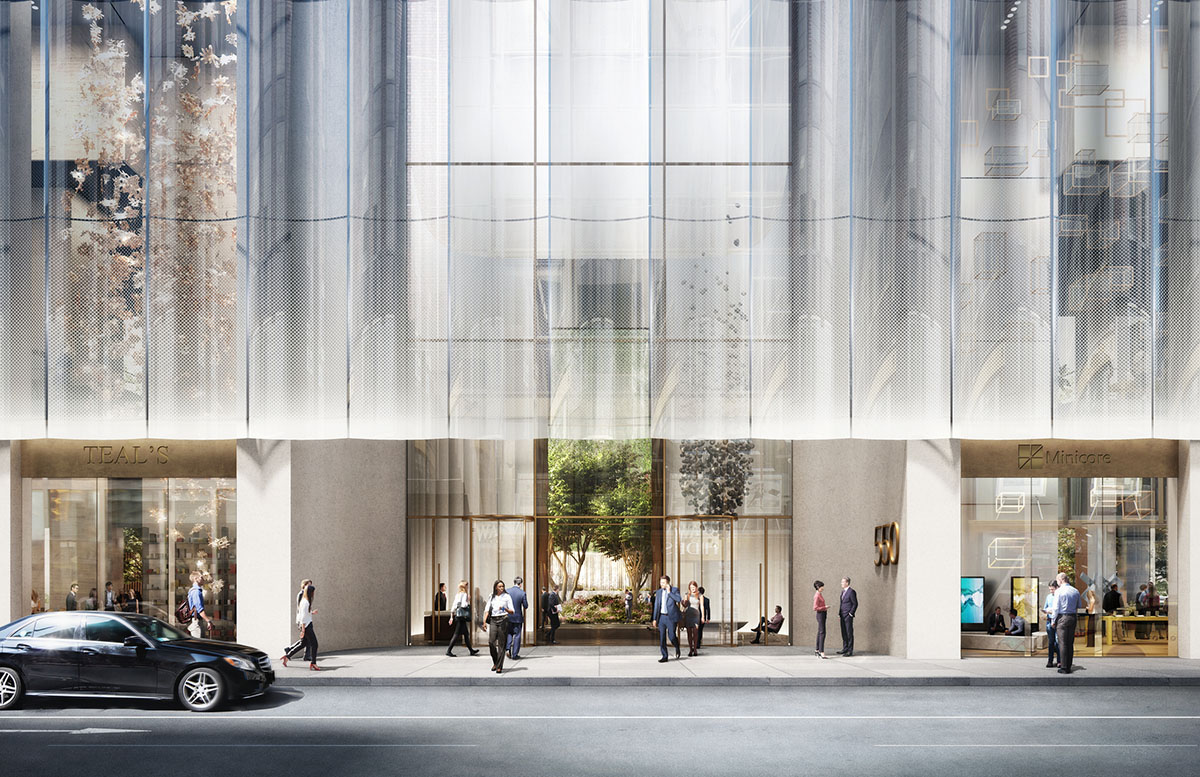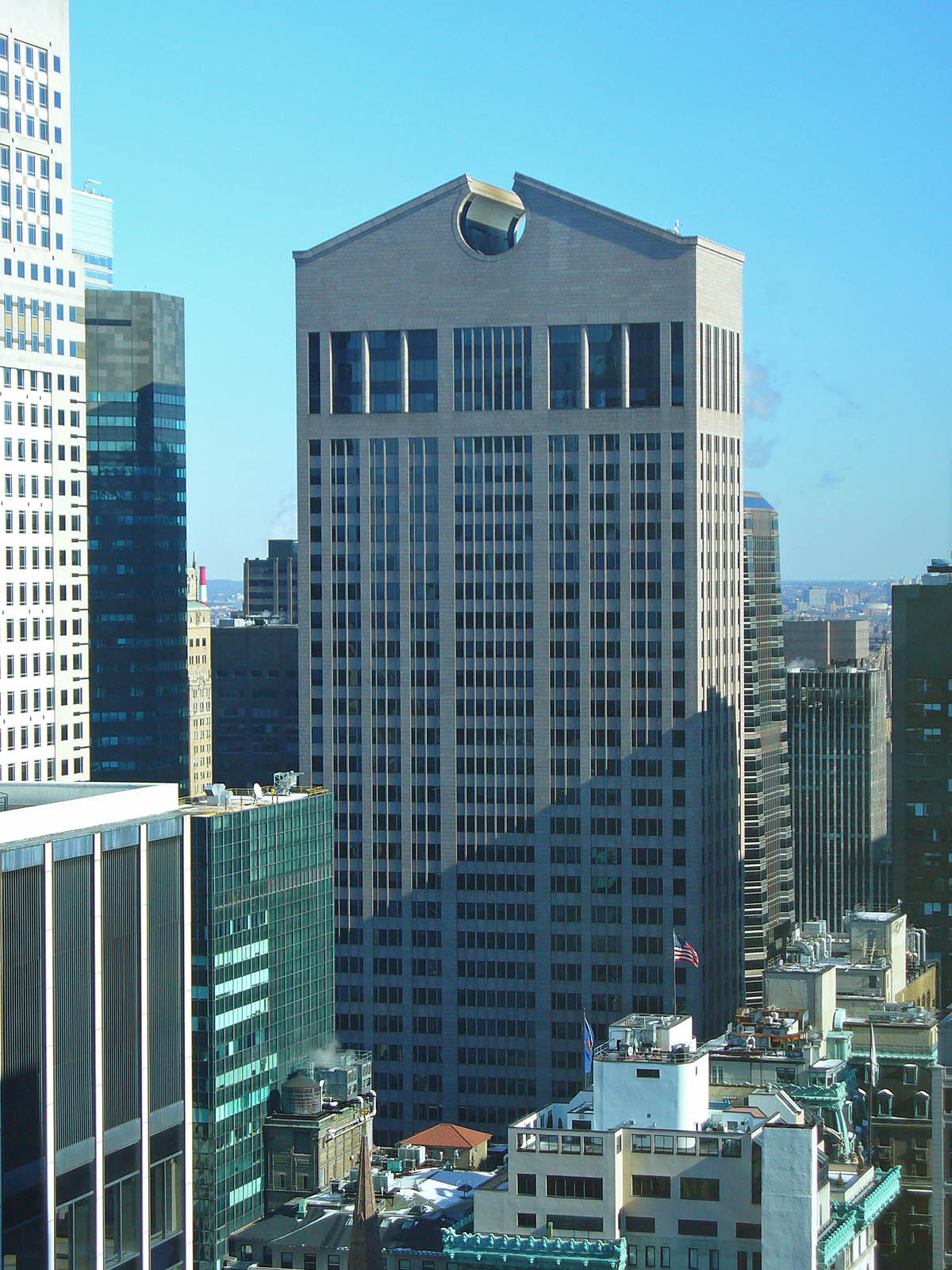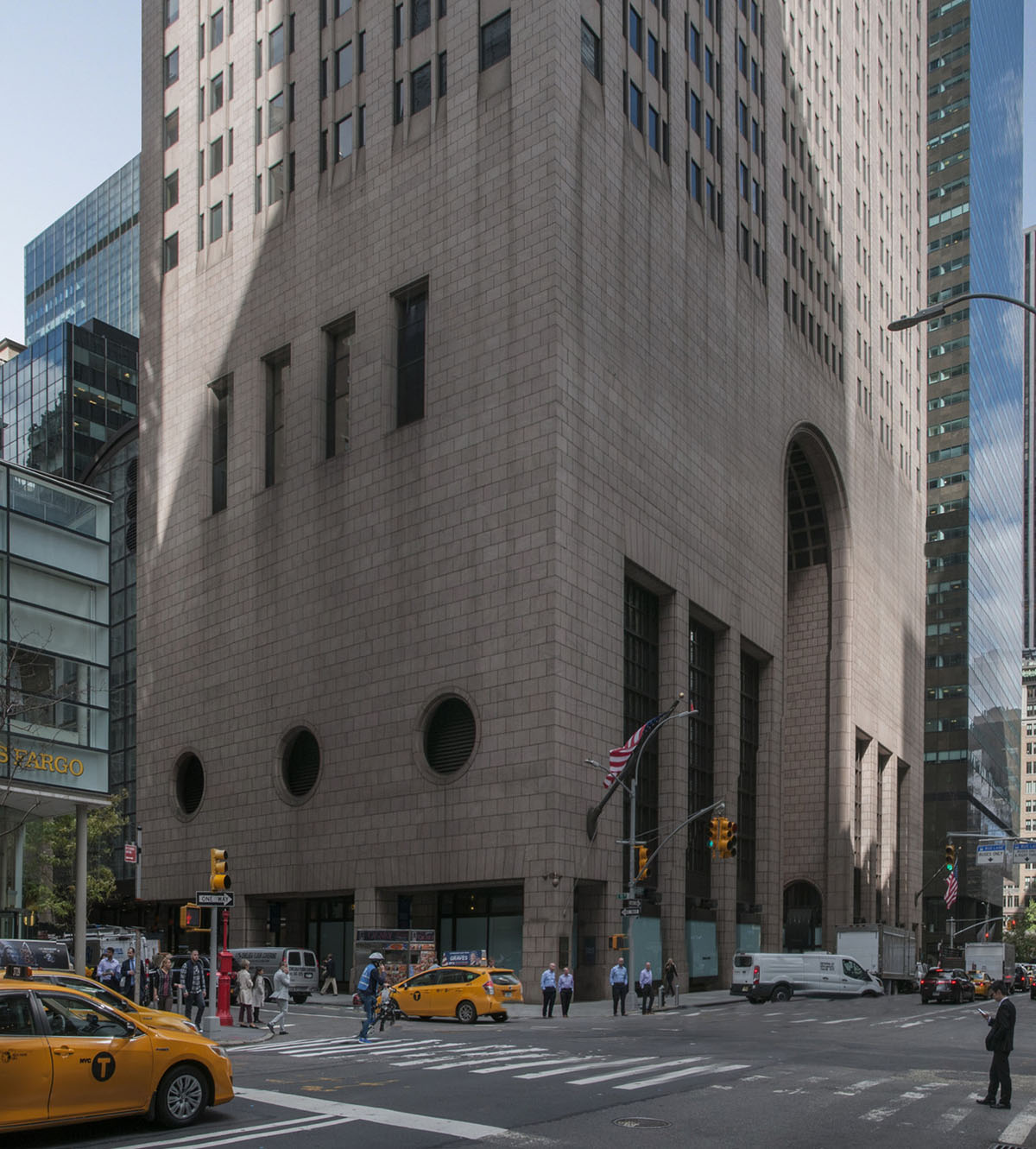Submitted by WA Contents
Snøhetta's overhaul halted for AT&T building as the building gets "Individual Landmark" status
United States Architecture News - Aug 03, 2018 - 02:49 17948 views

Snøhetta's controversial overhaul plans have been halted for Philip Johnson's postmodern AT&T Building as the building has been given "individual landmark" status by New York's Landmarks Preservation Commission (LPC).
Officially announced on July 31, 2018 on the LPC's website, the decision stipulates the preservation of the exterior of the iconic tower covered by clad with pinkish-gray granite and crowned by a colossal broken pediment, as it is considered as "a feature that sets it dramatically apart from other skyscrapers in midtown."

Lobby Entrance Detail on Madison Avenue. Image © DBOX
Following that decision, it can be understood that Snøhetta's radical transformation on the exterior will not be made on the tower's base since the firm proposed to replace the frontal base with a glass façade.
"I am thrilled the Commission has recognized the importance of the AT&T Corporate Headquarters Building," said Landmarks Preservation Commission Vice Chair Frederick Bland.
"This is the building that established postmodernism as a legitimate architectural movement. It deserves to be preserved for future generations."

Philip Johnson's AT&T Corporate Headquarters Building in Manhattan. Image © David Shankbone
Snøhetta first revealed plans for the renovation of the AT&T Building in November last year, but the firm faced with a harsh criticism by the public, architects and the architectural media to protest the plans of the firm.
Even, after the plans revealed, a small group, comprised of around 20 people from different architectural fields, including a preservation group DOCOMOMO, the Historic Districts Council, architect Robert A.M. Stern and advocates attended a planned protest at the heart of Midtown Manhattan in the same month, carrying signs that write "Hands off my Johnson", "Granite is great" and "Save AT&T".
Johnson's AT&T Corporate Headquarters Building - later known as Sony Plaza and now 550 Madison Avenue, is an icon of the Manhattan skyline and of postmodern architecture built between 1978 and 1984, designed with John Burgee.

The existing AT&T building. Image © DBOX
The iconic tower emerged as "a statement building" with powerful, dramatic forms drawing on classical references, ushering the era of postmodernism, which represented a departure from modern architecture. The AT&T was known as the world’s first skyscraper associated with this new style.
The 37-story office tower, prominently located on Madison Avenue between East 55th and 56th Streets, is clad with pinkish-gray granite and crowned by a colossal broken pediment. Its monumental entrance is flanked by groups of flat arches that originally opened to twin arcades beneath the tower.
"The AT&T building, which has generated widespread critical and media attention since its inception, is considered one of the most important postmodernist buildings in the world and it is one of Johnson/Burgee’s most celebrated works to this day," stated in a press release by LPC.
"Though Sony made alterations to the public spaces on the ground level when it occupied the building in the early 1990s, the handsomely-executed granite facades look much as they originally did, from the round and flat arches at the base to the peak of the tower’s colossal pediment."
"The iconic form of 550 Madison, from the arches at its base to its unique peak, is a jewel in our streetscape that deserves to be preserved," said Manhattan Borough President Gale A. Brewer. "I thank the Landmark Preservation Commission for designating this postmodernist masterpiece for future generations of New Yorkers."

After Snøhetta's renovation of the existing AT&T building - 550 Madison Avenue, looking North from 55th Street. Image © DBOX
"As the world’s first skyscraper built in the postmodernist style, the AT&T Building at 550 Madison Avenue is architecturally and historically distinctive," said Assembly Member Richard Gottfried. "It is eminently worthy of today’s landmark designation."
"Today’s designation of 550 Madison as a landmark secures its rightful place among the great architectural staples of New York City," said Council Member Keith Powers. "I applaud the advocates and groups that understood the significance of this postmodern landmark and fought to ensure its preservation."
The demolition of the building's lobby part began in January this year, but with this important designation by the LPC, it seems it will halt plans to continue on the overhaul of the tower.
Top image: 550 Madison Avenue, view looking west at updated façade. Image © DBOX
